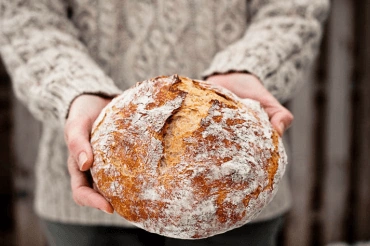9990. 'Take one young bull, a son of the herd' means purification of the natural or external man. This is clear from the meaning of 'a young bull' as the good of innocence and charity in the natural or external man, dealt with in 9391. And since the words 'a son of the herd' are used, the truth of that good is also meant, truth being meant by 'a son', and the natural level by 'the herd'. For the meaning of 'a son' as truth, see 489, 491, 533, 2623, 3373, 9807, and for that of 'the herd' as the natural level, 2566, 5913, 8937. The reason why purification of the natural or external man is meant here by 'a young bull, a son of the herd' is that the animal was offered in sacrifice, and sacrifices were signs of purification from evils and falsities, or expiation, in this instance purification from evils and falsities present in the natural or external man. But purification in the spiritual or internal man is meant by the burnt offering of a ram.
[2] To know what each kind of burnt offering or sacrifice represented one must first know that in a human being there is the external and the internal, and that in each there is that which belongs to truth and that which belongs to good. Therefore when a person is to be regenerated he must be regenerated as to the external and as to the internal, and in each as to truth and as to good. But before a person can be regenerated he must be purified from evils and from falsities, for these stand in the way. Purifications of the external man were represented by burnt offerings and sacrifices of oxen, young bulls, and he-goats, but purifications of the internal man by burnt offerings and sacrifices of rams, kids, and she-goats, and purification of the internal itself, or that which is inmost, by those of lambs. Consequently from the actual animals offered in sacrifice one may see what kind of purification or expiation was being represented.
[3] The reason for saying 'was being represented' is that burnt offerings and sacrifices did not purify or expiate a person, but merely served to represent purification or expiation. For is there anyone who fails to recognize that such offerings of animals do not take away any evil or falsity at all that is present with a person? - see the places in the Word quoted in 2180. The reason why those offerings did not take evil or falsity away, but merely represented such a removal of it, was that only a representative of the Church was established among the Israelite and Jewish nation, which served to join them to heaven, and through heaven to the Lord, see what has been shown on this subject in the places referred to in 9320 (end), 9380. But what was represented specifically by burnt offerings and sacrifices of young bulls, rams, and lambs, will be seen in what follows in the present chapter, since they are the subject there.







